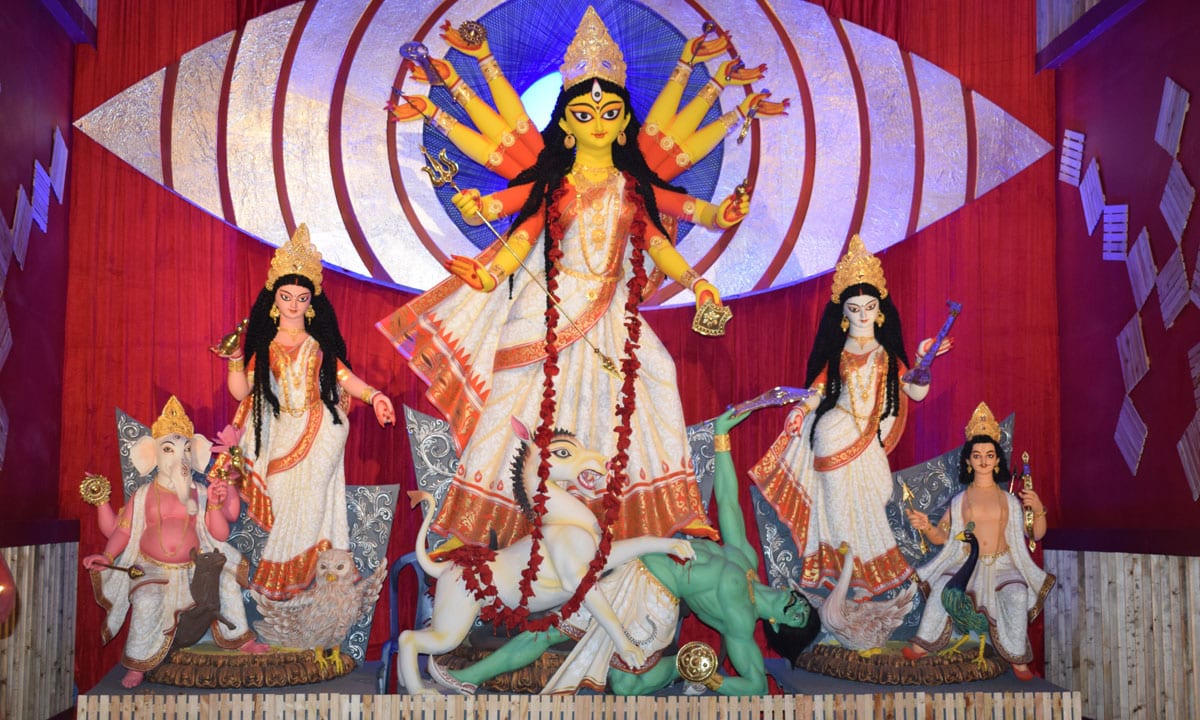In just a day from now, shouts of ‘Ganapati Bappa Morya’ will rent the air with their fervent passion. Amidst the 33 crore deities of Hinduism, Ganesha is one of the most popular of gods and seems to be getting even more so with every passing year.
In fact, the idols and the variety of sculptures of Ganesha are amazing. Each year, the ‘Murtis’ are designed in a unique way with the current trend in mind. These days they have come up with eco-friendly Ganesha that grows up into a tree and even edible statues of Ganesh. Perhaps this year we may find Ganeshas with sanitizers and masks too!
The reason behind such depiction is our beliefs that preach Gods not only to be earthly but with a deep sense of contemporary style. Hindu gods are never believed to be distant from their devotees. There are the likes who even feel close enough to promise the God gifts in return for a favor (Haven’t we all seen students bargaining – promising extra coconuts if they did well in exams?).

Ganesha, the god of wisdom and success, has 108 different names and each represents one especial aspect of him.
Demolisher of Obstacles (Vighneshvara)
Why Hindus have so many gods can be answered with a very similar explanation. If you observe minutely, each God has his/her own unique powers and purpose. It’s like the work and aims are divided into sections. Likewise, Ganesha is popularly worshiped as a remover of obstacles. For the very same reason, he is often worshiped by the people before they begin anything new. Beginning something auspicious is often referred to as ‘Shri Ganesh’ in the form of a verb.
God of intelligence
Ganesha is considered to be the lord of letters and learning and largely worshiped by students and those related to education.
Worshiped before worshiping every God
In every Hindu ritual of worship, Ganesha is meant to be worshipped before offering prayers. So, he is omnipresent in all Hindu worship.
Part of Durga Pandal

Ganesha is often placed with the Durga idol in Dusshera. He along with Goddess Lakshmi, Saraswati, and Lord Kartik are believed to visit the earth once a year along with Durga.
Ganesha beyond India and Hinduism
To bring auspiciousness and avert obstacles, Ganesha was particularly worshiped by traders and merchants, who went out of India for commercial ventures. Hindus migrated to Maritime Southeast Asia and took their culture, including Ganesha to these lands.
The spread of Hindu culture established Ganesha worship in modified forms in Burma, Cambodia, and Thailand. In Indochina, Hinduism and Buddhism were practiced side by side, and mutual influences can be seen in the iconography of Ganesha in the area. In Thailand, Cambodia, and among the Hindu classes of the Chams in Vietnam, Ganesha started to be worshiped.
Ganesha appears in Mahayana Buddhism, not only in the form of both God but demon by the same name. Nṛtta Ganapati (dancing Ganesha), was popular in northern India, later adopted in Nepal, and then in Tibet. In Nepal, the Hindu form of Ganesha, known as Heramba, is popular. He has five heads and rides a lion.
Likewise, Tibetan representations of Ganesha show ambivalent views of him. A Tibetan rendering of Ganesh is Tshogs Bdag. In another form, he is shown being trodden underfoot by Mahākāla,(Shiva). The lord appears in China and Japan in forms that show distinct regional character. In Japan, Ganesha is known as Kangiten.
Ganapati is worshiped by most Jains, for whom he appears to have taken over certain functions of the god of wealth, Kubera. Images of God appear in the Jain temples of Rajasthan and Gujarat.
Before the advent of Islam, Afghanistan had close cultural ties with India, and both Hindu and Buddhist deities were worshiped there. Sculptures from the 5th to the 7th centuries have survived, suggesting that the worship of Ganesha was prevalent in the region.
Bollywood
Most of the Hindu Gods turn inclusive on festive days. They are believed to be appearing in public for all Jatis and Varnas (sects). And so the Hindi Film Industry or Bollywood which is both cosmopolitan and parochial comes forth to offer prayers to the lord. Being located in Bombay, which is in Maharashtra where Ganesha is the majorly worshiped Lord, celebrities irrespective of their religion bring home Ganapati.
The lord is often depicted as a hero in many Bollywood films. There are also movies in which the protagonist fiercely prays and dances for the Lord to bless him before his heroic act. Several animated films have also been curated with Ganesha.
LifeBeyondNumbers wishes you a very happy Ganesh Chaturthi. Stay safe!

